The concepts regenerative grazers use for large ruminants apply to horses as well
There is no specific recipe that can be provided to generate healthy horses and healthy land, but there are a few fundamental principles that can help horse owners and land managers make sound management decisions that benefit everyone. I’ve bred and managed over 130 Fjords on pasture since 1991, on five different farms in two states and four different soil types, and the concepts that I outline below are some that I’ve found applicable no matter where I live, nor on how much land I’m managing a particular group of horses.
There are three primary adaptive stewardship concepts that relate to four primary ecosystem processes, and that facilitate land and horse health in seven primary ways. Approaching the management of my horses and land in this manner has saved me money and helped me solve problems, in addition to all of the environmental benefits that result.
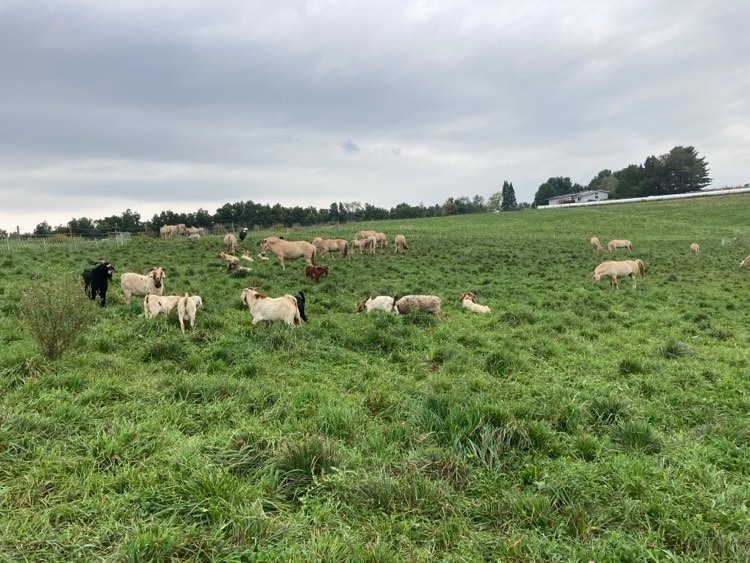
Adaptive Stewardship Concepts for Horse Properties
There are three adaptive stewardship concepts that I’ve found enable horses and land to be managed well: 1) compounding, 2) diversity and 3) disruption. These concepts help a horse owner or horse-farm manager consider the circumstances of any particular farm for decision making.
Compounding
Every decision made and practice applied to a horse and its pasture system has more than just a singular effect. Everything on the farm affects every other part of the farm, from water quality to the pasture to horse health to cost of managing the horses and farm. Since all things are connected, decisions will have ripple effects that may last for years to come. Those effects may be positive or negative, so we try to compound positively.
Diversity
Many horse properties strive for the manicured look of an even pasture height and color, but natural things like diversity. The horses are healthier on a more diverse diet, with a diversity of friends and activities and environmental features in their daily life. The soil can be more resilient if it contains a lot of different fungi, bacteria, protozoa, insects and animals, which can be supported by a diversity of plants. This diversity produces health for the whole system.
Disruption
One important soil health principle is to minimize soil disturbance, especially the churning and compaction that occurs when soils are waterlogged and hoof traffic turns it into deep mud. One important animal health principle is to minimize stress, especially as induced by unstable herds or lack of companionship for herd animals, lack of forage for animals that are designed to spend around 12 to 18 hours grazing each day, and lack of natural movement. In natural systems, disruptions happen occasionally, so resilient systems are capable of rebounding from the disturbance to become highly functional again.
The key is to be intentional with the disruptions that we allow or induce in our horse pastures. Pulling horses off the pasture to a drylot in conditions where soils are waterlogged will reduce the hoof damage to the sod and soil structure, while leaving them in a particular section that has a weed problem during wet soil conditions can facilitate removal of those weeds and will prepare the soil for a new seeding of desirable plants. Mixing other livestock into the horse pasture grazing system can be a beneficial disruption from a monoculture grazing herd of just horses. Other disruptions can be alterations to the number of animals on a section of pasture at any particular time, rotation patterns, seasonal use of different paddocks, prescribed fire, rest period length and paddock layout. Avoiding a prescriptive management approach every grazing season will induce disruptive forces that can generate greater success, health and savings for the whole system.

Ecosystem Processes in Horse Pastures
There are four ecosystem processes operating in any horse pasture: 1) energy flow, 2) the water cycle, 3) the nutrient cycle and 4) community dynamics. Understanding these interconnected processes can help horse owners and property managers make smart decisions for the health of their horses and for their land. Working with these processes, rather than against them, is the natural way to horse and land health.
Energy flow
The source of energy for the earth and all things on it is the sun. Plant leaves are the solar panels that convert that light energy, with carbon dioxide from the air, into carbohydrates that fuel the plant, feed the microbes that assist in mineral access and generate soil structure, and expand the forage for horse and other animal grazing. Grasses are the primary food for our horses and also the most efficient at performing this energy flow process. Plants must be present and have sufficient leaf area to take advantage of the available energy source in your location. For optimal functionality, allow the plants to recover sufficiently after a grazing bout and avoid grazing them too short.
Water Cycle
Water cycles through evaporation, precipitation, infiltration or runoff, and transpiration. Water is finite and precious, and it moves through the cycle by penetrating the soil. Horse grazing management can profoundly affect the amount of water that the soil on the farm can absorb, hold and release. Keeping the pasture covered in plants that feed soil microbes is how the soil particles are aggregated for the production of a spongy soil that can perform water conservation effectively.
Nutrient Cycle
There is a constant transfer of nutrients between the living organisms and the nonliving components of the environment. The aboveground nutrient cycle occurs through disturbances such as horse grazing. Belowground, biotic activity is responsible for the nutrient cycle and its efficiency. Diversity of the above- and belowground communities produces an optimal nutrient cycle for horse and pasture health.
Community Dynamics
The plants, animals and microbiology in any pasture are dynamic in their structure and composition over time. Managing the plant community in a horse pasture is critical to the three cycles above. Maintaining a diverse plant community year-round can improve the nutrient cycle and optimize the energy and water cycles. That plant community shouldn’t be limited to grasses and legumes; other broadleaf plants, shrubs, trees, perennial and annual species, and cool- and warm-season species compliment the functionality of the three other cycles. A diversity of grazer- and browser-type animals in the pasture can help maintain the plant diversity.
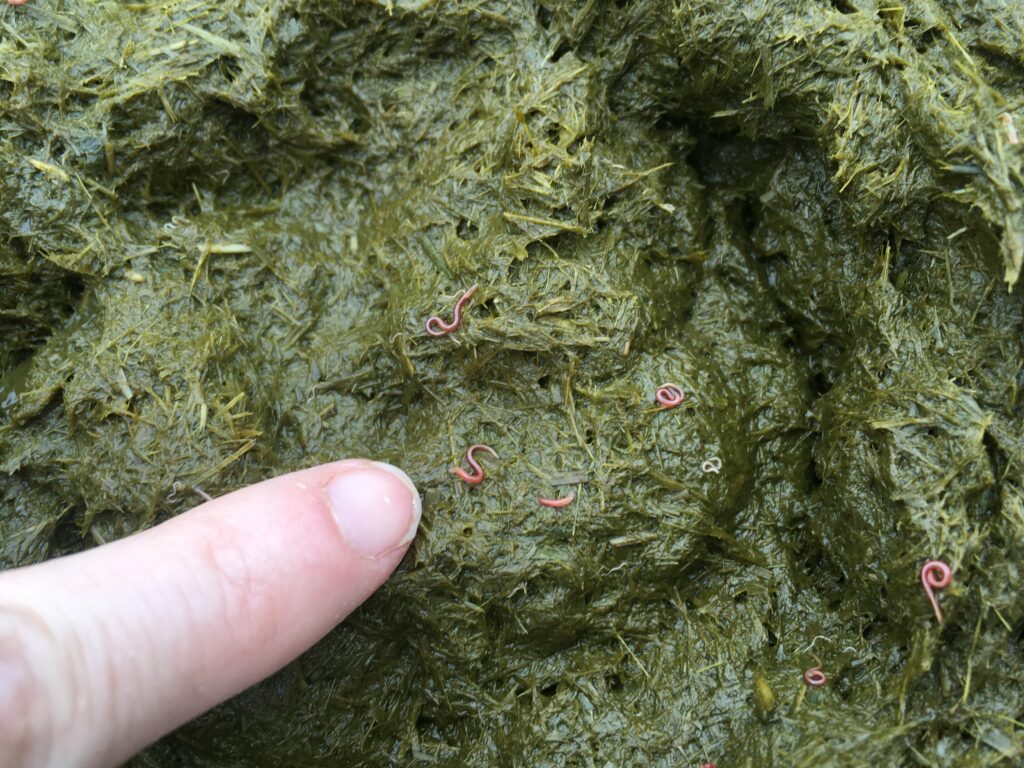
Principles Facilitating Horse and Land Health
Finally, there are seven land-health principles that I’ve found useful: 1) Know your context, 2) cover the soil, 3) minimize soil disturbance, 4) increase diversity, 5) maintain continuous living plants/roots, 6) graze horses and other livestock together and 7) manage horses and other livestock organically. These are all managed together with actively growing plants in the horse pasture, diverse microbial communities in the soil and animals, and well-managed grazing of the horses and other species.
Know Your Context
Any particular farm will be slightly different from neighboring farms based on its context. This includes the humans in the system — not just the climate, geography, soils, etc. It includes your goals, family dynamics, skills, resources, and approach to problem solving. Due to this, a horse pasture management approach that works for one person may not work for you because your context is not the same. The context of any farm is also constantly changing, so a successful horse property manager is one that is willing to think critically, experiment, learn, grow and adapt with the inevitable changes.
Cover the Soil
A well-managed horse pasture is one with growing plants covering as much of the soil as possible for as much of the year as possible, because those plants feed the microbes that create the functional aspect of the soil in the grazing system. Soil functionality contributes greatly to plant productivity and diversity, which is directly related to horse health. A functional soil is resilient to disturbances. Shade from a dense and diverse stand of plants keeps the soil at a cooler temperature, which facilitates microbial activity and the cycling of energy, nutrients and water. Plant cover also minimizes erosion.
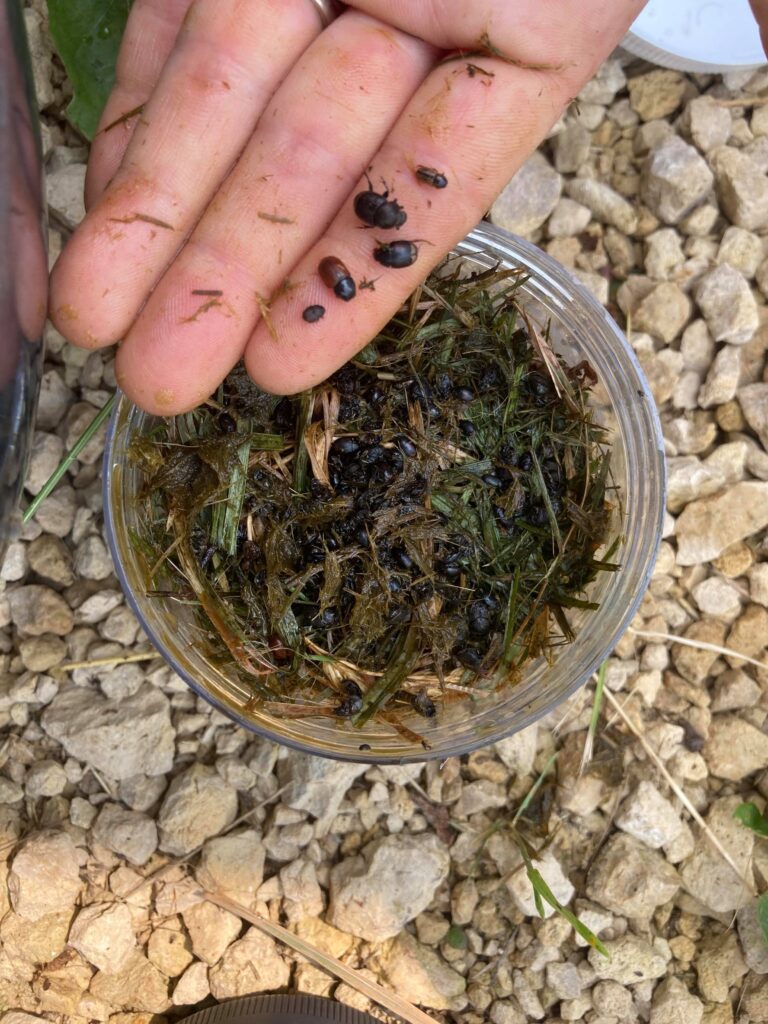
manure and nutrient management
Minimize Soil Disturbance
The churning of pasture sod into sloppy mud during wet periods, or the compaction of the soil in areas heavily trodden by horses, are disturbances to the soil that alter the structure and thus limit the biological activity of the soil. It takes time and plants pumping energy back into the soil in those locations to feed the microbes that will rebuild that soil structure. There are other disturbances, such as fire, flooding, fertilizers, chemical residues in manure from dewormers or drugs, pesticides, etc., that can result in soil disturbance. The goal is to be aware and manage the intensity, frequency, duration and timing of those disturbances such that they are not the same every year and that they aid in rebuilding the natural ecosystem processes.
Increase Diversity
Increasing plant diversity in a horse pasture will increase the gut microbial community of the horses eating those plants, and the soil microbial community. Adding more species of livestock to a pasture system does the same. Wild horses have a huge diversity of grasses, legumes, forbs and woody species in their diet. They share their range with many species of animals and birds, and the complex interactions of all of these living organisms produce a system that is more resilient to disease or attack from a disruptive force than a less diverse system.
Maintain Continuous Living Plants/Roots
Growing, living plant roots are required to feed the soil microbes that produce the conditions for beneficial biological processes in horse pastures. Perennial plant species are especially useful due to their root systems continuing to function, even during the winter or dry season when the top of the plant may be dormant. The primary source of energy that soil microbes can access is from root exudates of plants, and that energy source is required for the beneficial cycles of energy, nutrients and water. Different species of plants have roots of variable forms and rooting depth, use different minerals, and support a diversity of microbes. Keeping those microbe communities diverse, active and abundant may not seem to be an obvious benefit to the horse, but it is more critical than commonly understood.
Graze Horses and Other Livestock Together
Research shows us that soil biological activity and carbon biomass is significantly increased in a pasture where animals graze the plants versus where the grass is mown mechanically. Grazing and browsing animals are a necessary part of healthy and functioning ecosystems, and those animals benefit from their diverse diet and environmental contexts. Managing horses in a rotational system that is adaptive to the ever-changing context of the farm through the seasons, and ideally includes some other livestock in the rotation, improves soil and plant health, recycles nutrients, reduces plant selectivity in diets, increases plant diversity, improves phytochemical diversity of the animals diets, improves animal health, improves reproduction and longevity, saves money, increases yield of forages (and thus stocking density), holds and filters water, increases energy inputs into the soil, and generally optimizes the beneficial outputs of the entire system.
Rotate horses through small paddocks where 1) the duration in any paddock is no more than two to three days; 2) forages aren’t grazed shorter than four to six inches of residual vegetation; 3) the rest period for that paddock is 20-40 days, or whatever is needed in that environment for the grazed forages to recover before being grazed again; 4) paddocks are grazed at different times of the season each year; and 5) other species of livestock are grazing that same system. Doing these things will enable the pastures to maintain or increase the diversity of plants, microbes and optimal functionality; will increase forage yield; will help horse owners manage forage quality; will extend the grazing season; provides ecosystem services; and reduces costs.
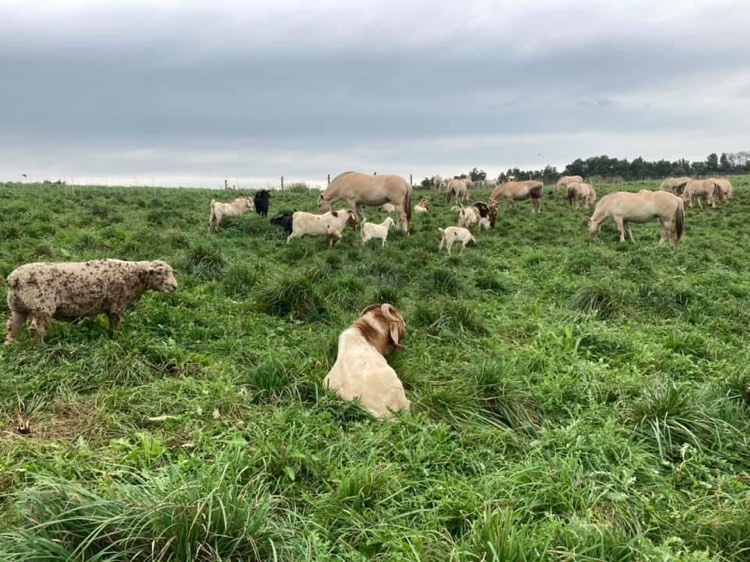
Manage Horses and Other Livestock Organically
Many of the health problems encountered in conventional equine management, in my opinion, are a result of reductionist and controlled approaches to health care. The diversity of phytochemicals found in plants that grow in every environment around the world can replace nearly all of the chemical interventions that today’s horse industry uses to attempt to prop up animals that are functioning less than optimally as a result of their life conditions and human-directed management.
When given the opportunity to graze diverse plants, horses and other livestock can recognize phytochemicals as useful or not to current health conditions through their body’s post-ingestive feedback function of the vagus nerve. In other words, their bodies can tell them if eating a plant will help them feel better because the phytochemicals reduce viral load, remove parasites, counter another plant toxin, reduce oxidative stress, and help manage insulin, cortisol, inflammation, histamines, and many other effects. A benefit of not using chemical dewormers in horses — such as the macrocyclic lactone class, of which ivermectin is the common one — is the ability for dung beetles to colonize horse manure and provide their services of killing gastrointestinal parasites, face flies, horn flies and gnats; cycling nutrients; increasing forage yield and thus carrying capacity; reducing refused forages from dung contamination; reducing pasture contamination of L3 helminth larvae; and improving forage diversity.
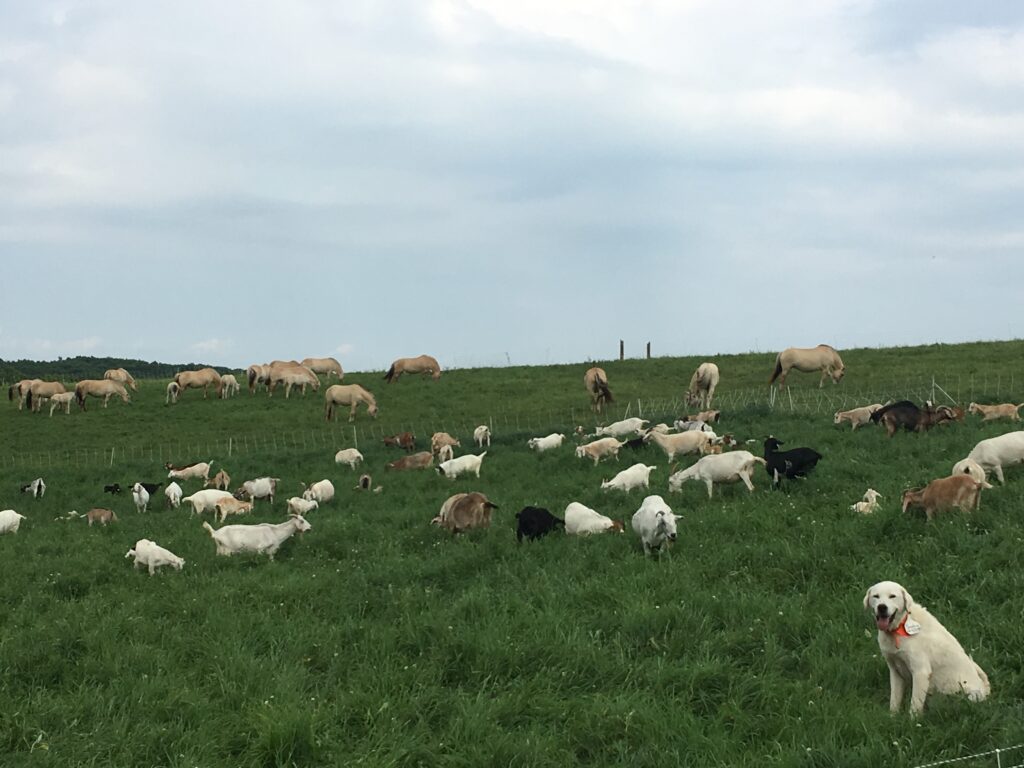
There is no prescriptive, step-by-step guide to managing horses and pastures well, but by considering the above principles, processes and approaches, anyone can design and manage a horse grazing system that is suited to their environment, animals and themselves.
Cherrie Nolden is a forage-based farmer of horses, goats, sheep, chickens and livestock guardian dogs, based in Dodgeville, Wisconsin. She has formal education in wildlife ecology, agroecology, veterinary research and animal science from UW-Madison and Kansas State.














